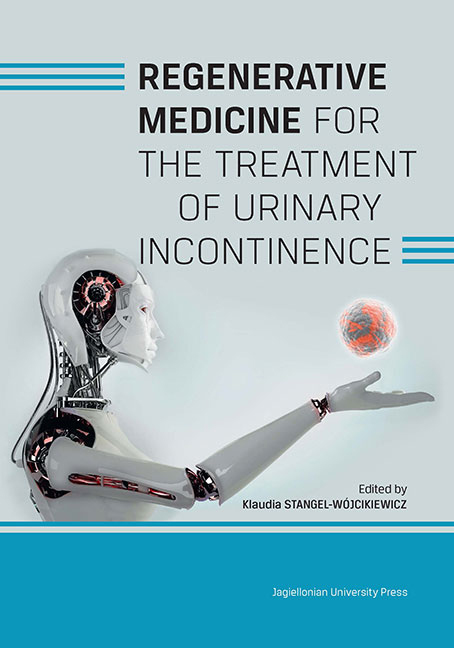Book contents
- Frontmatter
- Contents
- Preface
- Introduction
- Chapter 1 Urinary incontinence in women - outline of the problem
- Chapter 2 Anatomy of the urogenital system
- Chapter 3 Clinical types of urinary incontinence
- Chapter 4 Treatment of stress urinary incontinence
- Chapter 5 Regenerative medicine for the treatment of urinary incontinence
- Chapter 6 Virtual Patient system - simulations of clinical encounters for medical education. Case study of a woman with urinary incontinence
- Chapter 7 Development of a robotic tool aiding a new stem cell-based treatment for stress urinary incontinence in women
- Chapter 8 Difficulties and limitations of cell-based therapy for the treatment of urinary incontinence
- Summary
- List of authors
Chapter 7 - Development of a robotic tool aiding a new stem cell-based treatment for stress urinary incontinence in women
Published online by Cambridge University Press: 03 January 2018
- Frontmatter
- Contents
- Preface
- Introduction
- Chapter 1 Urinary incontinence in women - outline of the problem
- Chapter 2 Anatomy of the urogenital system
- Chapter 3 Clinical types of urinary incontinence
- Chapter 4 Treatment of stress urinary incontinence
- Chapter 5 Regenerative medicine for the treatment of urinary incontinence
- Chapter 6 Virtual Patient system - simulations of clinical encounters for medical education. Case study of a woman with urinary incontinence
- Chapter 7 Development of a robotic tool aiding a new stem cell-based treatment for stress urinary incontinence in women
- Chapter 8 Difficulties and limitations of cell-based therapy for the treatment of urinary incontinence
- Summary
- List of authors
Summary
In 2012, the Polish National Centre for Research and Development (NCBiR), under its Applied Research Programme, granted funds to launch a project entitled Micromanipulation with surgical instruments for assisting in intercorporeal procedures with the use of vision imaging (MACHWIZ). The project's aim was to develop practical methods of designing devices for the micromanipulation of surgical instruments with visual feedback for handling the tools and additional imaging methods for the location of tissues or organs subject to the treatment. The work was focused on procedures carried out with endoscopic tools through natural body orifices within the lesser pelvis. Injecting stem cells into the urethral sphincter in treating stress urinary incontinence in women is an example of this type of procedure used for the verification of the developed method. The functionality of the designed tool was verified during experiments on a demonstration station fitted with a urologic phantom.
Current studies use conventional systems to visualise the manipulation environment. The most common are ultrasound imaging and endoscopic vision systems. The disadvantage of these methods is that the obtained image allows only for the assessment of some parameters critical for the manipulation process. Therefore, the MACHWIZ project relies on multimodal (hybrid) imaging methods using an ultrasound scanner, an endoscopic camera with an integrated light source, and urethral pressure profilometry. Experiments were carried out on a laboratory station fitted with imaging systems and a phantom model of the lesser pelvis. The project aimed at developing techniques for data acquisition to be used for multimodal imaging (synergistic images), initial processing and joint presentation of multimodal images.
The developed methods were used to design a robotic device aiding the micromanipulation of endoscopic surgical instruments through natural body orifices within the lesser pelvis. The functionality of the designed device was verified during experiments on a demonstration station fitted with a urologic and gynaecologic phantom, imitating the real anatomical, optical and mechanical features of major organs of the lesser pelvis. Results from the experiments were considered for necessary modifications of the developed design procedure and for preliminary evaluation of the designed tool with a focus on its functionality in clinical practice.
- Type
- Chapter
- Information
- Publisher: Jagiellonian University PressPrint publication year: 2016



